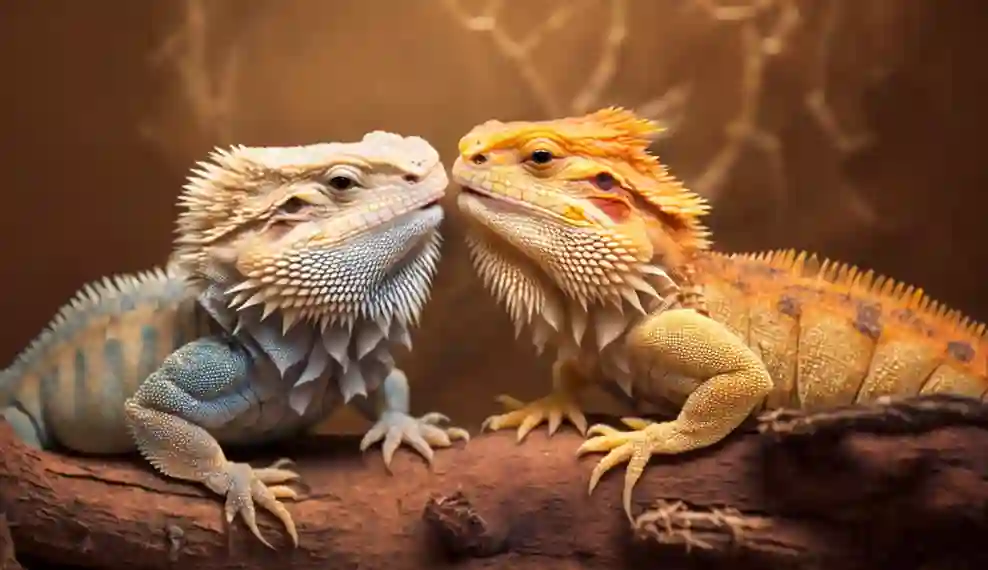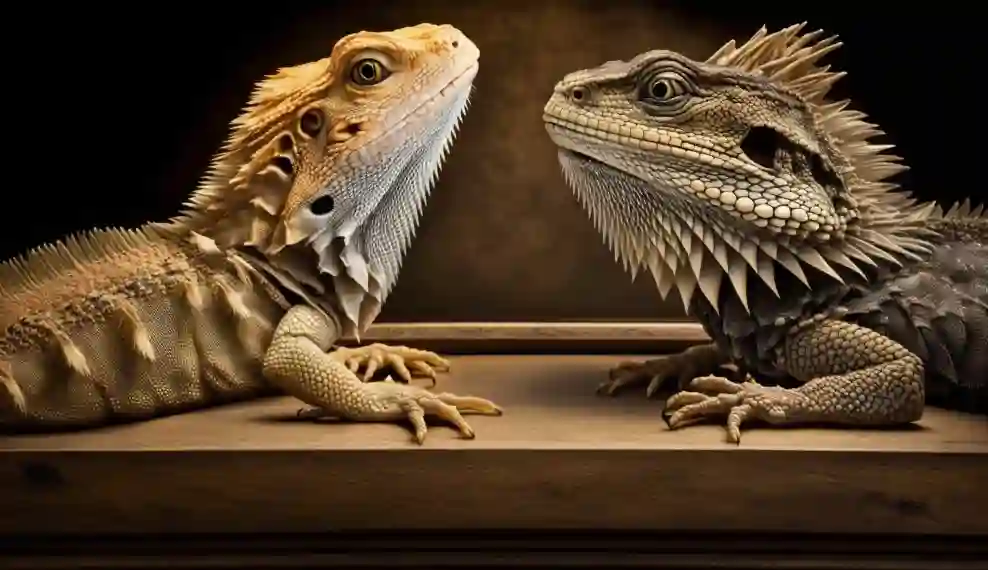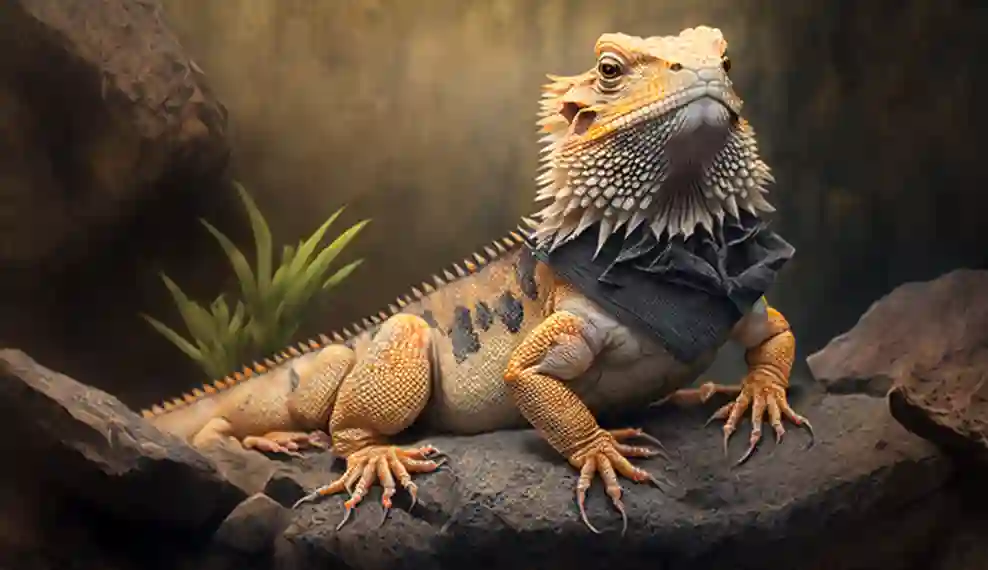Yes, bearded dragons can change gender. The sex of bearded dragons is determined by temperature during incubation, with lower temperatures producing males and higher temperatures producing females.
Some owners and specialists believe that observing behavior and physical differences can also help determine the gender of a bearded dragon.
As temperatures creep above 32° Celsius, chromosomally male ZZ dragons will reverse course and develop as females instead.
When temperatures reach 36° Celsius, 100% of genetic males develop into sex-reversed females.
This means that the sex of bearded dragons can be influenced by environmental factors such as temperature.
It is also possible to determine the gender of a bearded dragon by observing its physical characteristics and behavior.
Male bearded dragons typically have a larger head size and a thicker tail that reaches down to the tip, while females have a smaller, thinner shape and a slimmer tail.
How To Find The Sex Of Your Bearded Dragon?
First off, take note that distinguishing between male and female dragons can be tricky.
Male dragons have larger heads with prominent spikes on their jowls. Females typically have smaller heads and lack these sharp spines along the sides of their faces.
Males tend to be bigger overall than females. To double-check if there are any doubts about what gender your dragon is, look at its underside for two bumps near its vent – known as hemipenal bulges – which indicate a male beardie.
If not present then congratulations – your pet is likely female.
Now that we’ve gone over how to identify gender in bearded dragons, let’s discuss why this is so important.
Knowing the sex of your dragon allows for better management when introducing other reptiles into their environment; ensuring they don’t mate and create unwanted hatchlings.
It also helps provide vital information regarding dietary needs and potential health issues too.
How Do Bearded Dragons Change Their Gender?

Bearded dragons do not have an XX/XY chromosome system and therefore don’t experience a physical transformation from male to female or vice versa.
So then, what causes gender change for bearded dragons? Well, there are several ways this could happen:
- Sexing – The temperature at which the egg develops determines the sex of the hatchling. If you increase or decrease the temperature during incubation, you can actually manipulate the sex of your dragon!
- Asexual Reproduction – Some species of bearded dragons have been known to produce offspring without mating with another individual. This process is called parthenogenesis and results in all female progeny (no males).
- Egg Laying – Female beardies who lay eggs but never mate may still produce viable eggs even if no sperm has ever entered them. These eggs will be exclusively female offspring since they contain only maternal DNA (no paternal contribution).
How Can High Temperatures Cause Bearded Dragons To Change Sex?

This phenomenon, called temperature-dependent sex determination (TSD), occurs when the eggs of a reptile are exposed to certain environmental conditions that result in either male or female development.
In particular, if the eggs experience higher temperatures during incubation, they will develop into males; if the eggs experience lower temperatures during incubation, they will develop into females.
With bearded dragons, this means that their gender can be influenced by the amount of heat they receive while still inside their egg.
When it comes to TSD and bearded dragon gender change, research has found that even slight changes in temperature can have drastic effects on the sexes of hatched dragons.
For instance, increasing the average incubation temperature from 93℉ to 94℉ resulted in an entire clutch becoming all-male rather than a mix of both sexes.
Similarly, decreasing the same incubation temperature down to 92℉ led to an entire clutch becoming exclusively female.
Therefore, it is important for breeders and owners alike to ensure their bearded dragons are receiving proper amounts of heat according to what suits them best throughout their lifetime.
What Are The Implications Of Bearded Dragons Changing Their Gender?
Gender changes in bearded dragons may cause disruption in social groups as well as other ecological issues.
For instance, when one sex becomes dominant over another within a group of bearded dragons, competition for resources could become an issue.
If two males or two females were to mate with each other instead of opposite sexes, they would not be able to reproduce successfully due to infertility caused by being too closely related genetically.
The implications of gender change in bearded dragons must be carefully considered before making any decisions about how best to manage them in captivity.
It’s essential that we understand both the biological aspects of this phenomenon as well as its potential impacts on our local ecosystems.
By doing so, we can effectively address any potential problems posed by these gender transitions while protecting these animals for future generations.
Can Male Bearded Dragons Lay Eggs?

No, male bearded dragons cannot lay eggs.
Male bearded dragons have different reproductive organs than female bearded dragons and do not possess the ability to produce eggs like their female counterparts.
It is true that some species of reptiles can change gender, but this does not apply to bearded dragons.
Bearded dragons are oviparous animals, meaning they reproduce by laying eggs outside of their bodies.
The sex ratio for these lizards is generally 1:1 (one male for every one female).
To determine the gender of a young dragon, you need to look at its hemipenal bulges located on either side of the base of the tail if it’s an adult or check out its preanal pores located near its ventral scales if it’s still growing up.
Male bearded dragons will typically have larger heads and wider tails compared to females as well.
Do Bearded Dragons Reproduce Asexually?
While they cannot change their gender like some other animals, they can reproduce without needing two parents – this is called asexual reproduction.
Asexual reproduction enables beard dragons to produce offspring without relying on another dragon for fertilization.
Unlike mammals and birds, which require mating between males and females in order to create offspring, beard dragons are able to reproduce through parthenogenesis—a form of asexual reproduction where a female egg cell develops into an embryo with no male sperm involved in the process.
This means that even if there are only female bearded dragons present in an environment, those females will be able to reproduce and give birth to healthy hatchlings.
Although it’s not common for beard dragons to practice this method of reproduction due to their need for genetic diversity, it does happen occasionally when needed.
Beard Dragons also have fascinating abilities surrounding gender changes as well.
Even though they are considered male or female based on certain physical characteristics – such as size or coloration – these traits may change over time depending on environmental factors.
These incredible creatures continue to amaze us with their unique adaptations and surprising reproductive capabilities.
Their ability to mate both traditionally and through asexual reproduction gives them greater flexibility than many other species allowing them to survive changing environments more successfully.
